#japonensis
Explore tagged Tumblr posts
Video
Leopard by Cloudtail the Snow Leopard Via Flickr: A picture of a leopard.
#leopard#tier#animal#mammal#säugetier#katze#cat#feline#groß#big#raub#beutegreifer#panthera#pardus#chinaleopard#nordchinesischer#japonensis#north#chinese#north-chinese#china#flickr
21 notes
·
View notes
Text

Conservation efforts brought the red-crowned crane (Grus japonensis) back from the brink of extinction in Japan, but the species is still listed as endangered, with fewer than 2,000 mature individuals left in the world.
Image © Bjorn Olesen.
39 notes
·
View notes
Text
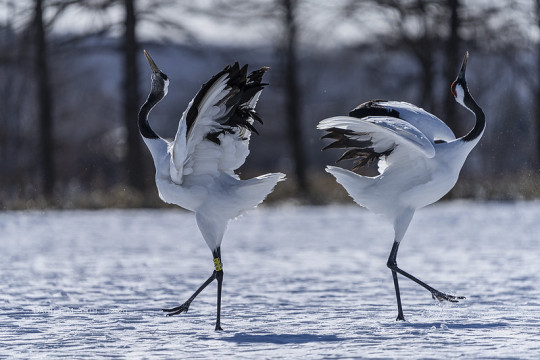
A pair of red crowned cranes (Grus japonensis) perform a courtship dance in Kushiro, Hokkaido, Japan
by Daniel M Shih
#red crowned crane#cranes#cranes and rails#birds#grus japonensis#grus#gruidae#gruiformes#aves#chordata#wildlife: japan#wildlife: asia
396 notes
·
View notes
Text

Kanako Kinutani “Beyond the Moonlite Night" ink, pigment, gold paint on washi paper 51x100 cm.
203 notes
·
View notes
Text

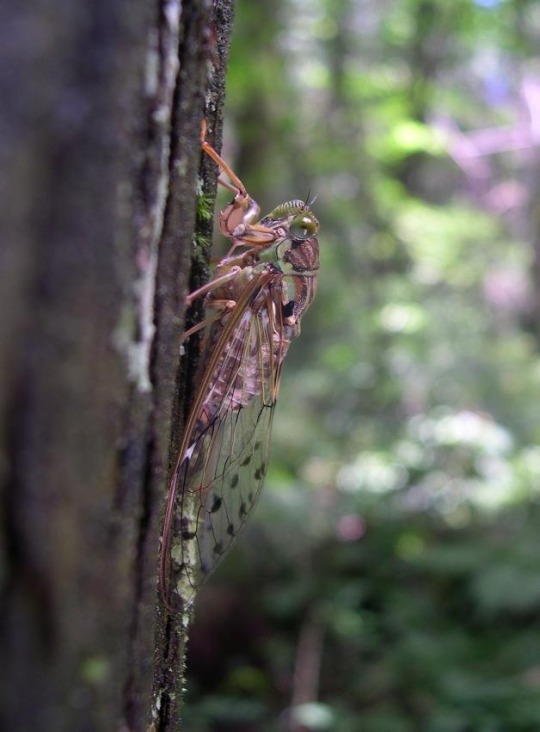

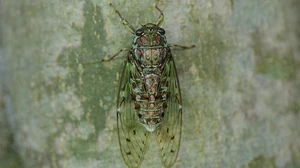



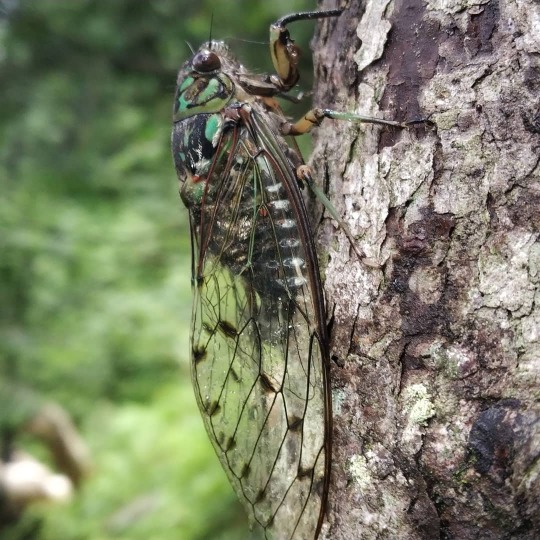

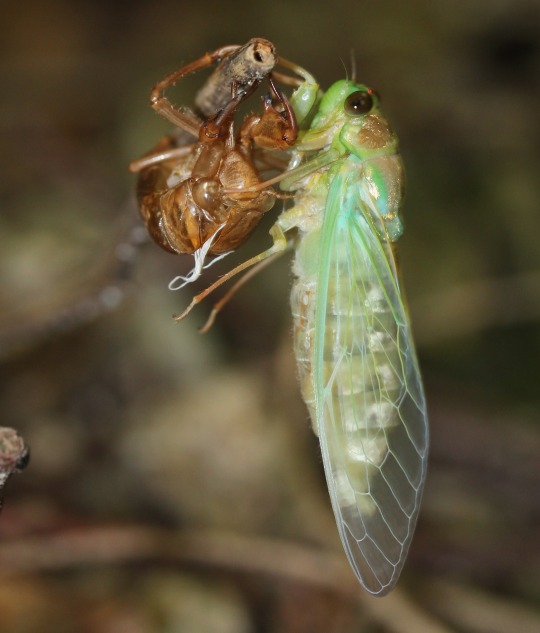
Tanna japonensis better known as the evening cicada, kanakana or higurashi is a species of cicada insect in the genus Tanna which can be found throughout eastern Asia but is particularly abundant in Taiwan and the islands of Japan. Here they inhabit plains, meadows, mountainous regions and in particular cypress, cedar, and hardwood forests. Both adults and larvae feed upon tree sap and other plant liquids. Adult females reach around .8 to 1 inch (21 to 25mm) in length while males reach 1.1 to 1.5 inches (28 to 38mm) in length, sporting a longer and thicker abdomen to the female. In addition, the intra-abdominal cavity of the male is more developed, giving it a more resonant call. The body is coloured reddish-brown with green around the compound eye and in the centre and back of the thorax; mountain dwelling specimens tend to be darker. In addition to the two prominent compound eyes, they have three small eyes on the forehead and two pairs of large wings. T. japonensis don't undergo complete metamorphosis. Their young hatch directly from eggs, and spend most of their lives growing through a series of molts underground, feeding on plant roots. The nymphs have strong front legs for digging. When they emerge, they ecdyse for the final time, producing wings, becoming fully grown and ready to mate typically in late summer and all throughout autumn. An evening cicada may live up to 13 years, however will only spend one season as an adult.
#pleistocene pride#pleistocene#pliestocene pride#pliestocene#cenozoic#stone age#ice age#tanna japonensis#kanakana#higurashi#evening cicada#cicada#bug#bugs#insect
13 notes
·
View notes
Text
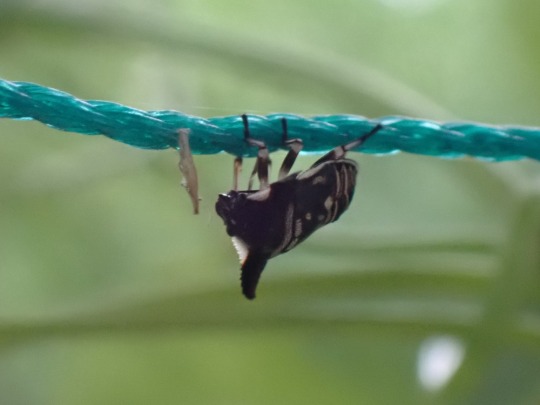

ウシカメムシの幼虫、背中の模様が人の顔に見える(9月6日)
Alcimocoris japonensis
#Alcimocoris japonensis#Pentatominae#shield bug#tarczówkowate#tarczówka#insects#owady#bugs#ogródek#japan
5 notes
·
View notes
Text
¿Quién fue el baboso que le puso el nombre?
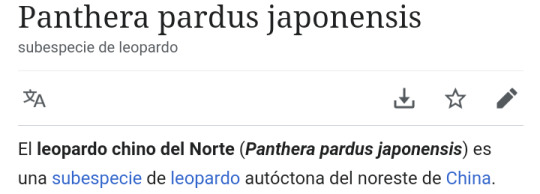
#panthera#pantera#leopardo#felino#nombre científico#panthera pardus japonensis#leopardo chino del norte
2 notes
·
View notes
Text
GRULLA JAPONESA
GRUS JAPONENSIS NOMBRE CIENTÍFICO: GRUS JAPONENSIS. LONGITUD: 1,5 METROS. PESO: 7 A 12 KILOS. PLUMAJE: IGUAL PARA AMBOS SEXOS. MIGRACIÓN: MIGRATORIO. ESTADO: EN PELIGRO. UBICACIÓN: ESTE DE ASIA. CON SU COMPLEJA DANZA DE CORTEJO Y PAREJAS PARA TODA LA VIDA, ESTA AVE ELEGANTE HA SIDO DURANTE MUCHO TIEMPO EL SÍMBOLO DE LA FELICIDAD Y LA BUENA FORTUNA. ES EL MIEMBRO MÁS PESADO DE LA FAMILIA DE LAS…

View On WordPress
0 notes
Text
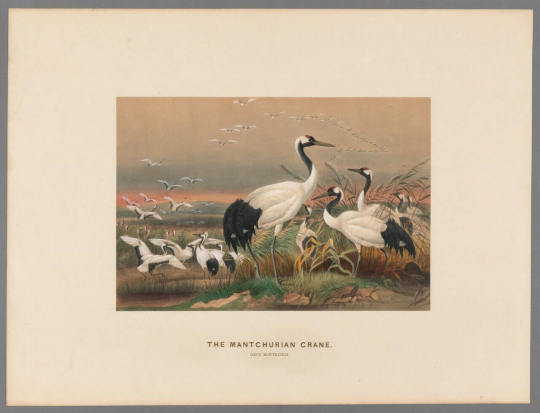
The Manchurian Crane (Grus montignesi) | Joseph Wolf | Zoological sketches v.1 (1861) | Biodiversity Heritage Library | Flickr | Public domain
0 notes
Video
Red-Crowned Cranes by Coyoty Via Flickr: Grus japonensis. At the Roger Williams Park Zoo in Providence, RI.
#Roger Williams Park Zoo#Roger Williams Park#Providence#Rhode Island#RI#zoo#nature#animal#fauna#bird#avian#red-crowned crane#crane#Grus japonensis#wild#life#wildlife#biodiversity#Animal Planet#New England#park#flickr
0 notes
Text
Looked into the “Japanese red bug” a bit more and it seems to actually refer to Parastrachia japonensis, a type of shield bug native to East Asia. The parenting behavior is actually correct according to every source I could find, it’s just that the Japanese Red Bug common name is used by… literally none of the sources I looked at, which explains why you might not have been able to find anything if you were searching with that name.
One thing I can tell you as someone so zoology obsessed is that books, articles, blog posts, any literature at all is highly likely to let you know if an invertebrate or reptile has ever been known to eat its own young but not nearly as likely to admit how many widely beloved mammals will do the same (most of them) or how often (way way more often than the scorpions or snakes)
#Parastrachia japonensis#Shield bugs#True bugs#Parental/subsocial/provisional shield bug#Why common names are the worst lmao#invertebrates
7K notes
·
View notes
Video
Leopard by Cloudtail the Snow Leopard Via Flickr: A picture from a leopard.
#leopard#tier#animal#mammal#säugetier#katze#cat#feline#groß#big#raub#beutegreifer#panthera#pardus#chinaleopard#nordchinesischer#japonensis#north#chinese#north-chinese#china#zoo#stadtgarten#karlsruhe#flickr
34 notes
·
View notes
Photo

Japanese Red Crown Cranes (Grus japonensis) are dancing together at Japane's Tsurui Ito Tancho Crane Sanctuary. These cranes form stable, monogamous bonds and perform such duets to compete for scarce resources.
(Image credit: DoctorEgg/Getty)
#doctoregg#photographer#getty#japanese red crown cranes#cranes#grus japonensis#bird photographer#mating#japan#japane's tsurui tancho crane sanctuary#nature#animal
87 notes
·
View notes
Text

Japanese red-crowned cranes (Grus japonensis) in flight.
75 notes
·
View notes
Text
For #WorldMigratoryBirdDay:
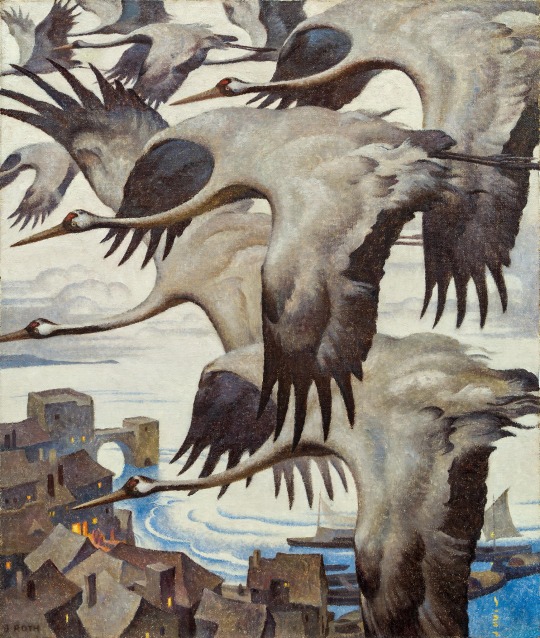
Norbertine Bresslern-Roth (Austrian, 1891-1978)
Crane migration, before March 1937
oil on jute, 120 × 100 cm
🆔 Red-Crowned Crane (Grus japonensis)
“In the spring & summer, the migratory populations of the red-crowned crane breed in Siberia (far E Russia), NE China, & occasionally in NE Mongolia (i.e., Mongol Daguur Strictly Protected Area). The breeding range centers in Lake Khanka, on the border of China & Russia. Later, in the fall, they migrate in flocks to the Korean Peninsula & E central China to spend the winter. Vagrants have also been recorded in Taiwan. In addition to the migratory populations, a resident population is found in eastern Hokkaidō, Japan.”
#animals in art#animal holiday#european art#20th century art#birds in art#bird#painting#birds#crane#cranes#Red-Crowned Crane#flock#migration#World Migratory Bird Day#oil painting#Norbertine Bresslern-Roth#women artists#ornithology
38 notes
·
View notes
Text
HGSN 21-1
Chapter (Japanese)
(Please hit the green thumbs up at the end of the chapter to show support)
Rough translation by me
P1
(sfx: cicada calls: kumazemi)
(sfx: cicada calls: higurashi)
P2
(txt: smaller grave marker labeled "Caw-tarou" in childish handwriting)
(txt: bread wrapper labeled "Cream pan")
Yoshiki: Sorry this is all there is
Yoshiki: As long as he's around, no one will hold a funeral for you...
P3
Yoshiki: But, if he's here, I can go without forgetting you, so I'm glad
Yoshiki: 'cause that's...what scares me...the most...
Hikaru: Whoa
Hikaru: So you were here? Brings me back...
Hikaru: We used to always play here back then right?
Hikaru: Ah, look at this
P4
(txt: "Start→" written in childish handwriting)
Hikaru: The Super Maruo stage I made. The one you played with your finger while making "pwing" noises and stuff.
Yoshiki: Yeah
Hikaru: ...
P5
Hikaru: Hey...what are the differences between me and Hikaru?
Yoshiki: You're completely different...
Yoshiki: He'd read the room more than you do, he was more mature...
Yoshiki: And he was harder to understand
Yoshiki: He was more of a rascal. He'd tell lies, and he could be pretty wily.
Yoshiki: And...
Yoshiki: he'll definitely never come back. So you're different.
Hikaru: ...
Hikaru: ...did you 'like' him?
P6
Yoshiki: ...why?
Hikaru: No...it's nothing, just...
Hikaru: 'cause
Hikaru: Before, you looked away after seeing my bare chest...
Hikaru: And like...
Hikaru: I was just wondering... why...
Yoshiki: ...I don't want to say
Hikaru: ...why?
P7
Yoshiki: ...Now, even if I look at your body, I don't feel anything in particular anymore
Yoshiki: ...And also...when it comes to these feelings
Yoshiki: I think its fine if you don't understand them
P8
Hikaru: ...what's with that?
Hikaru: ...It's true that they're...not something I have. Those feelings...
Hikaru: Compared to humans, on a fundamental level,
Hikaru: I'm totally different, I guess
Yoshiki: There are things we have that only we have
Yoshiki: Also...
Yoshiki: You don't need to turn into a human or anything
P9
Hikaru: Huh..?
Yoshiki: In fact, please don't ever become anything like a human
(sfx: grab)
Hikaru: Hey!
Hikaru: Sure...?
P10
Yoshiki: (He's a being different from us in every way)
Yoshiki: (There's no way we could come to terms with each other on every point)
Yoshiki (That said, given that he's here)
Yoshiki: (it still doesn't make it okay for him to kill people, but...)
Yoshiki: (Rather than forcing him to fit in with humans)
Yoshiki: (if there was a place where he could live as himself instead...)
P11
Yoshiki: (For that, I'd...)
Yoshiki: (give everything...)
(sfx: cicada calls: kumazemi)
(sfx: cicada calls: higurashi)
--
(sfx: marker on paper)
==
Next chapter: 2023/09/19
Twitter Extras (link):
'Hikaru's vocabulary is limited, so he'll say "like", but it differs from what humans mean by "like".
Why do dogs dig holes?
Why do cats sharpen their claws?
Just as humans can't understand these intrinsically, 'Hikaru's "like" may also not be understandable to humans.
==
T/N:
Regarding the cicada sounds in Japanese:
- Up until now, cicadas cries in HGSN have been represented with the sound "shawa shawa shawa"
- This is likely to represent the cry of the kumazemi (Cryptotympana facilis) which is very common in Western Japan and associated with summer: video sample
- In this chapter although there are still some "shawa shawa shawa" cries in the background, the largest cries are "kana kana kana" instead
- This is likely to represent the cry of the higurashi (Tanna japonensis) which is associated with late summer/autumn, and is thought to have a melancholy or lonely sound: video sample
By the way, in the final frame, we can see the word Nounuki partially obscured and the name Matsuyama, as well as an unfamiliar proper noun circled in the center. I expect next chapter to give more context and a full image for the chart in the final frame.
84 notes
·
View notes


